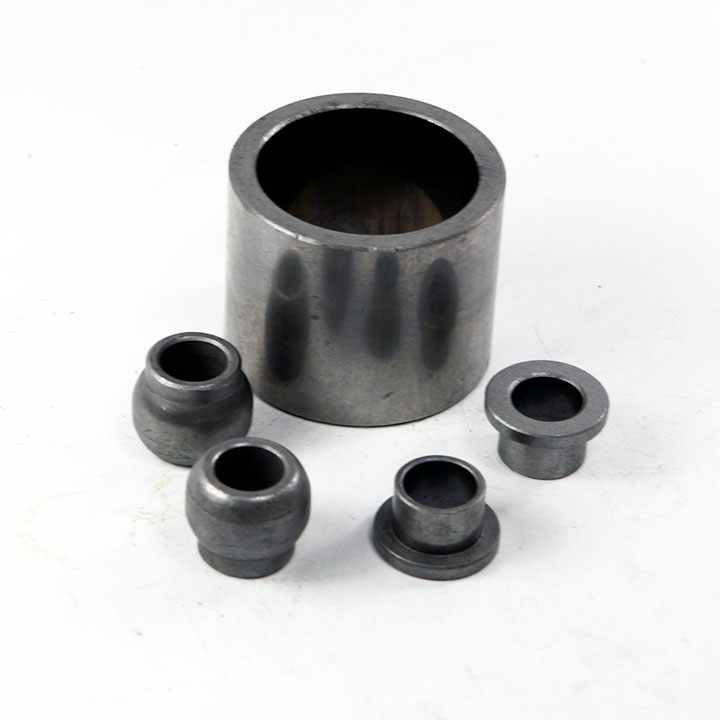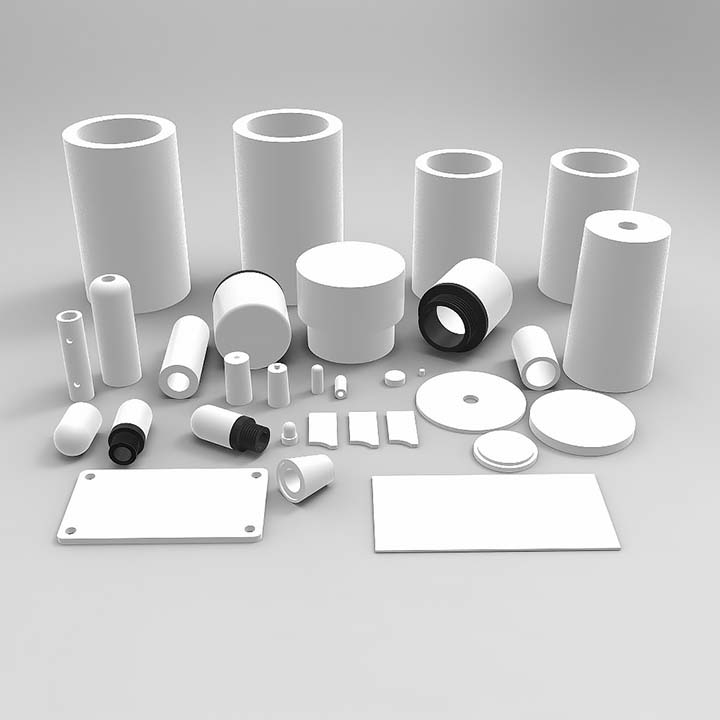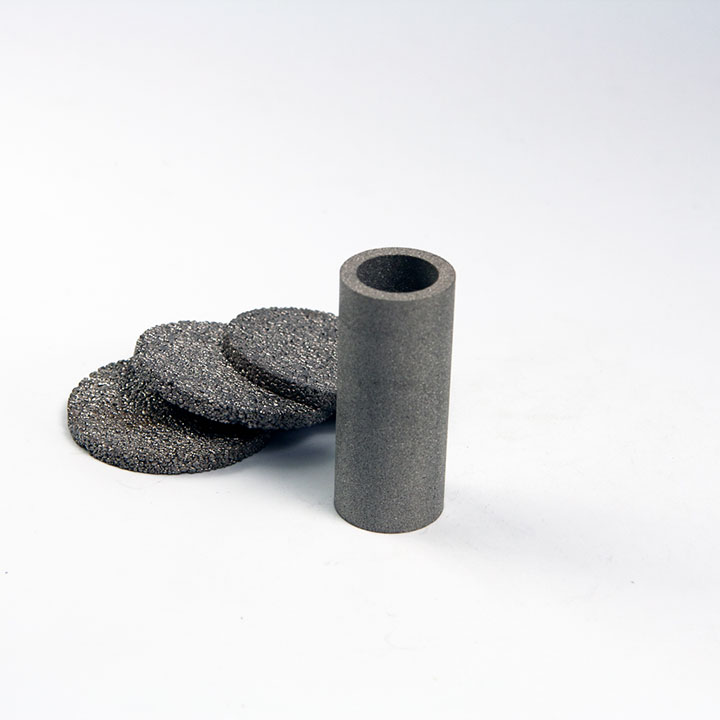Filtration is a critical operation in nearly every industrial process—whether it involves air, liquid, gas, or molten metals. Choosing the right filter medium can make a substantial difference in process efficiency, product quality, and operating cost. While traditional filter media—such as mesh screens, woven fabrics, paper cartridges, and ceramic elements—have been widely used, sintered metal filters are gaining popularity due to their unmatched performance, reliability, and total cost of ownership.
This article explores the core advantages of sintered metal filters compared to conventional filtration technologies. It’s designed to guide engineers, plant managers, and industrial buyers toward more durable, efficient, and sustainable filtration solutions.
What Are Sintered Metal Filters?
Sintered metal filters are manufactured through a powder metallurgy process that compacts and sinters metal powders into a porous, rigid structure. The sintering process involves heating the compacted powders just below their melting point, fusing particles together at their contact points. This results in a strong, self-supporting filter medium with tunable porosity and high structural integrity.
Common materials used include:
- Stainless steel (304, 316L)
- Bronze
- Titanium
- Inconel
- Hastelloy
These filters are widely used in industries like petrochemical, pharmaceutical, food processing, aerospace, automotive, semiconductor, and water treatment.
1. Structural Superiority
Monolithic Construction
Traditional filters, such as pleated cartridges or layered meshes, often consist of multiple bonded materials prone to delamination, especially under pressure or thermal stress. In contrast, sintered filters are monolithic. The entire structure is fused, resulting in:
- Zero risk of layer separation
- Elimination of adhesives or binding agents
- Simplified and robust construction
Dimensional Stability Under Stress
Sintered metal filters retain their shape and porosity even under extreme pressure or temperature fluctuations. Their high compressive strength (often exceeding 100 MPa) ensures mechanical stability in applications where plastic or fabric filters would deform or collapse.
Vibration and Impact Resistance
In dynamic industrial environments with vibrating equipment, sintered filters provide unmatched durability, maintaining performance without mechanical damage.
2. Performance Advantages
Precise and Uniform Pore Distribution
One of the standout features of sintered filters is precision porosity control, allowing manufacturers to achieve:
- Targeted pore sizes (±5% tolerance)
- Uniform pore distribution throughout the filter
- Predictable and repeatable filtration performance
This level of precision is difficult to achieve with extruded polymer or ceramic filters.
Higher Dirt-Holding Capacity
Thanks to their depth filtration capability, sintered metal filters can hold significantly more contaminants before clogging. Their porosity can reach up to 85%, allowing:
- Longer operating intervals
- Fewer replacements
- Greater contaminant retention across the filter body
Stable Filtration Efficiency Over Time
Unlike traditional media that degrade or become unevenly loaded with particles, sintered filters maintain consistent flow and filtration efficiency throughout their service life.
3. Operational Benefits
Regenerable and Reusable
A significant advantage of sintered filters is that they are not disposable. They can be regenerated using multiple cleaning methods:
- Backflushing with air, gas, or liquid
- Ultrasonic cleaning
- Thermal oxidation
- Chemical cleaning
This makes them ideal for continuous processing environments like chemical plants and refineries, where shutdowns are costly.
No Media Migration or Shedding
Traditional filters—especially those made of fibers or pleats—may release particles into the media stream as they degrade. Sintered filters:
- Do not shed fibers
- Maintain structural integrity
- Avoid contamination risks in sensitive applications (e.g., pharmaceutical, food, aerospace)
Withstands Pressure Pulses
Sintered filters can handle pressure pulses up to 15 bar, depending on the grade. This resistance is especially critical in systems with variable flow rates, such as compressors, blowers, or high-speed process valves.
4. Material Versatility
Broad Alloy Options
Sintered filters are available in a range of metals and alloys to match the chemical and mechanical demands of your application:
- 316L Stainless Steel – Excellent corrosion resistance and food-grade compliance
- Inconel – Exceptional strength at elevated temperatures and resistant to oxidation
- Titanium – Lightweight and corrosion-resistant in seawater and aggressive environments
- Bronze – Economical choice for lubricating oils or non-corrosive gases
Customizable Porosity Profiles
Advanced manufacturing techniques allow for graded porosity, enabling:
- Fine filtration downstream
- Coarse filtration upstream
- Better flow distribution
- Longer filter life due to even contaminant loading
This flexibility is unavailable in traditional filter types.
5. Lifetime Economics
Extended Service Life
Sintered filters typically last 5 to 10 times longer than equivalent polymer or fabric filters. Their durability in harsh operating environments ensures fewer replacements, which means:
- Less operational disruption
- Reduced spare parts inventory
- Lower long-term procurement costs
Reduced Downtime and Maintenance
Since sintered filters are cleanable and rarely need replacing, they drastically reduce maintenance intervals and downtime, translating to higher plant uptime and productivity.
Environmentally Sustainable
The reusability of sintered filters aligns with sustainability goals:
- Less solid waste
- Reduced environmental impact
- Lower resource consumption over the lifecycle
Companies aiming for ISO 14001 certification or ESG compliance find sintered filters to be a greener alternative.
Comparative Performance Summary
| Feature | Sintered Metal Filter | Traditional Filters (Polymer/Fabric/Ceramic) |
|---|---|---|
| Operating Temperature | 300–1000°C | 80–150°C (polymer), 300–600°C (ceramic) |
| Compressive Strength | >100 MPa | 1–10 MPa |
| Reusability | Yes (cleanable) | Often single-use |
| Filtration Type | Depth filtration | Mostly surface filtration |
| Pore Size Tolerance | ±5% | ±20% or higher |
| Fiber Migration | None | Common in fiber-based filters |
| Pressure Tolerance | Up to 15 bar pulse | 3–10 bar typical |
| Porosity | Up to 85% | Typically 30–60% |
| Lifecycle Cost | Low | High due to frequent replacements |
| Environmental Impact | Low (reusable) | High (disposables) |
Application Suitability
Sintered metal filters are ideal for industries where reliability, precision, and operating conditions demand more than what traditional filters can offer:
- Oil & Gas: Downhole filtration, compressor intakes, fuel gas cleanup
- Pharmaceuticals: Solvent purification, steam filtration, sterile processing
- Food & Beverage: Wine, beer, edible oil clarification, dairy
- Aerospace: Fuel system filtration, hydraulic systems
- Water Treatment: RO membrane protection, ultrafiltration pretreatment
- Power Generation: Turbine inlet air filtration, cooling water purification
- Chemical Processing: Reactor protection, catalyst recovery
Frequently Asked Questions (FAQ)
Q1: Are sintered metal filters suitable for high-temperature applications?
Yes. Depending on the alloy, sintered metal filters can operate at temperatures up to 1000°C, making them ideal for thermal reactors, exhaust systems, and heat-intensive processes.
Q2: How often do sintered metal filters need to be replaced?
Seldom. With proper cleaning, a sintered metal filter can last for years. In most industrial applications, replacement intervals are 5 to 10 times longer than disposable filters.
Q3: Are sintered filters more expensive upfront?
Yes, initially. However, their lower maintenance, longer lifespan, and reusability result in significant cost savings over time.
Q4: Can sintered metal filters be used for sterile applications?
Absolutely. 316L stainless steel sintered filters are often used in pharmaceutical and food processes. They can be steam-sterilized or autoclaved and comply with FDA and EU standards.
Q5: What flow rates can be expected from sintered metal filters?
Sintered filters generally offer 20–40% higher flow rates than ceramic filters of comparable size and rating, thanks to their open 3D pore structure and optimized depth filtration design.
Sintered metal filters represent a leap forward in industrial filtration technology. From their structural strength and high-precision performance to their operational longevity and sustainable reusability, they address the shortcomings of traditional filter media in every critical area.
For engineers and plant managers looking to upgrade their filtration systems, reduce operational costs, and meet regulatory demands, sintered filters offer an unmatched return on investment.
If you’re still relying on outdated filter types that clog, degrade, or need constant replacement—it’s time to switch to a smarter, stronger, and more sustainable solution.
Explore DALON’s full line of sintered metal filtration products today, or contact our engineering team to customize a solution for your application.




